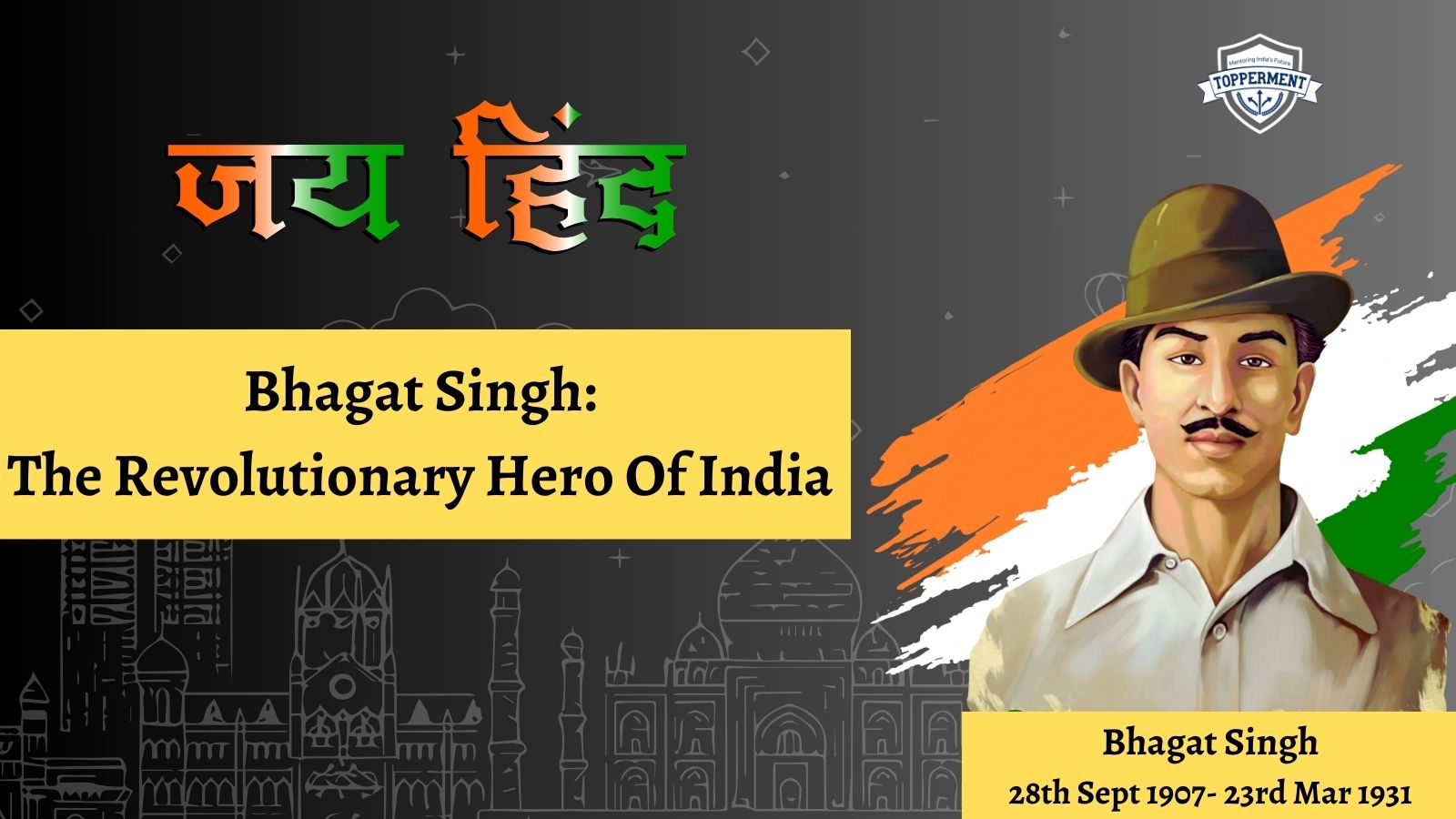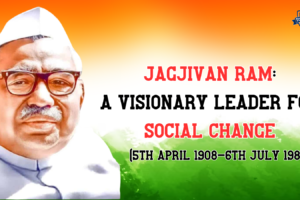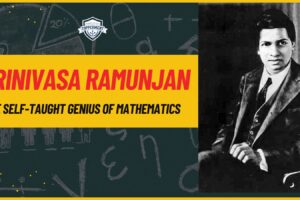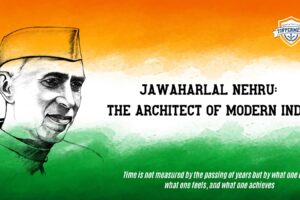
Bhagat Singh: The Revolutionary Hero of India | Indian National Personalities
Bhagat Singh was one of the most influential and charismatic leaders of the Indian independence movement in the early 20th century. He was a fearless revolutionary who challenged British colonial rule with his daring actions and inspiring words. He sacrificed his life for the cause of freedom and became a martyr and a folk hero in India.
Bhagat Singh Background and Education
Bhagat Singh was born into a Punjabi Sikh family on 27 September 1907 in the village of Banga in the Lyallpur district of the Punjab in what was then British India and is today Pakistan. He was the second of seven children—four sons, and three daughters—born to Vidyavati and her husband Kishan Singh Sandhu. His family was deeply involved in political activities and had a history of resistance against the British rule.
His grandfather, Arjun Singh, was a follower of Kartar Singh Sarabha, a prominent figure in the Ghadar Party, an organization that aimed to overthrow the British by armed revolt. His father, Kishan Singh, was a member of the Indian National Congress and had been jailed several times for his participation in protests and movements. His uncle, Ajit Singh, was also a prominent revolutionary who had founded the Bharat Mata Society, an anti-colonial group that advocated for violent methods to achieve independence.
Bhagat Singh received his early education at the Dayanand Anglo Vedic High School, which was operated by Arya Samaj, a reform sect of modern Hinduism. He was influenced by the teachings of Swami Dayanand Saraswati, the founder of Arya Samaj, who advocated for social reform, rationalism, and nationalism.
He also read extensively about the history and philosophy of India and other countries, especially those that had achieved freedom from colonial oppression. He was inspired by the works of Bal Gangadhar Tilak, Bipin Chandra Pal, Lala Lajpat Rai, Rabindranath Tagore, Vladimir Lenin, Karl Marx, Friedrich Engels, Mikhail Bakunin, and others.
He then enrolled at the National College in Lahore, where he studied subjects like history, economics, politics, and sociology. He also joined various student organizations and clubs that promoted nationalist and socialist ideas. He became an active member of the Naujawan Bharat Sabha (Youth Society of India), a group that aimed to mobilize the youth for the cause of independence.
He also worked as a writer and editor for several Punjabi- and Urdu-language newspapers that espoused Marxist theories and criticized the British policies. He is credited with popularizing the catchphrase “Inquilab zindabad” (“Long live the revolution”).
Activities for India’s Independence
Bhagat Singh was not satisfied with the moderate and nonviolent approach of the Indian National Congress led by Mahatma Gandhi. He believed that violence was necessary to overthrow the British rule and create a socialist republic in India. He joined forces with other revolutionaries who shared his vision and formed the Hindustan Socialist Republican Association (also Army, or HSRA), a secret organization that planned and executed several armed attacks against the British authorities.
One of his most famous actions was the assassination of John Saunders, a junior British police officer, in Lahore on 17 December 1928. Bhagat Singh and his associate Shivaram Rajguru shot Saunders dead outside the police headquarters, mistaking him for James Scott, the senior superintendent of police who had ordered a lathi (baton) charge against Lala Lajpat Rai during a protest against the Simon Commission (Lala Lajpat Rai was a popular leader of the Indian National Congress and one of Bhagat Singh’s mentors. He died of his injuries two weeks after the lathi charge).
Bhagat Singh wanted to avenge his death by killing Scott. Another associate of Bhagat Singh, Chandra Shekhar Azad, shot dead Channan Singh, an Indian head constable who tried to chase them after they killed Saunders. Bhagat Singh and his comrades escaped from Lahore after this incident and went into hiding.
Another daring act of Bhagat Singh was the bombing of the Central Legislative Assembly in Delhi on 8 April 1929. He and his associate Batukeshwar Dutt threw two bombs inside the assembly hall while it was in session. The bombs were not meant to kill anyone but to create a loud noise and a smoke screen. They also threw leaflets that declared their motives and slogans. The leaflets read:
“It takes a loud voice to make the deaf hear, with these immortal words uttered on a similar occasion by Valiant, a French anarchist martyr, do we strongly justify this action of ours.
This is how the deaf are made to hear. This is how we have to wake up the sleeping Indian masses. It is through this action that we have to make them realise the existence of the real iron man in their midst who can face all kinds of odds and still remain indomitable till the end.
Our sole purpose was to make the deaf hear and give the heedless a timely warning. Others have as keenly felt as we have done and from such amongst them that we have received unstinted support. We are, however, sorry to admit that we who attach so great a sanctity to human life, who dream of a glorious and free India, should be forced to shed human blood.
But the sacrifice of individuals at the altar of the ‘Great Revolution’ that will bring freedom to all, rendering the exploitation of man by man impossible, is inevitable.
Long Live the Revolution”
Bhagat Singh and Batukeshwar Dutt did not try to escape after the bombing. They surrendered to the police and were arrested. They wanted to use the trial as a platform to spread their message and expose the British tyranny. They also went on a hunger strike in jail to demand better treatment for political prisoners.
Philosophy
Bhagat Singh was a socialist and an atheist who rejected the idea of religion and caste. He believed that these were tools used by the British to divide and rule India. He wrote an essay titled “Why I Am an Atheist” while he was in jail, explaining his views on religion and rationalism. He wrote:
“I know that in denying God I am denying one of the strongest instincts of mankind. I know they will call me arrogant. And if I happen to be in the company of some leading atheists or rationalists, they will call me a fool or a novice. But I do not care about these labels. What I want to say is that belief in God has nothing to do with morality or ethics. It is a personal matter of an individual. I do not believe in God because I do not find any reason or evidence to support his existence.”
Literary Works:
Bhagat Singh was not only a revolutionary leader but also a prolific writer and thinker. He wrote several essays, articles, letters, and pamphlets on various topics such as politics, history, philosophy, religion, and literature. Some of his literary works are:
- Why I Am an Atheist: This is an essay that Bhagat Singh wrote in 1930 while he was in jail awaiting execution. He explained his reasons for rejecting the existence of God and the role of religion in society. He argued that belief in God was based on fear, ignorance, and superstition, and that rationalism and science were the true guides for human progress. He also criticised the hypocrisy and corruption of religious leaders and institutions. He wrote: “I know that in denying God I am denying one of the strongest instincts of mankind. I know they will call me arrogant. And if I happen to be in the company of some leading atheists or rationalists, they will call me a fool or a novice. But I do not care about these labels. What I want to say is that belief in God has nothing to do with morality or ethics. It is a personal matter of an individual. I do not believe in God because I do not find any reason or evidence to support his existence.”
- The Red Pamphlet: This is a pamphlet that Bhagat Singh and his associates published in 1929 after they bombed the Central Legislative Assembly in Delhi. They declared their motives and objectives for their revolutionary action and appealed to the Indian masses to join them in their struggle for freedom. They wrote: “It takes a loud voice to make the deaf hear, with these immortal words uttered on a similar occasion by Valiant, a French anarchist martyr, do we strongly justify this action of ours. This is how the deaf are made to hear. This is how we have to wake up the sleeping Indian masses. It is through this action that we have to make them realise the existence of the real iron man in their midst who can face all kinds of odds and still remain indomitable till the end.”
- Introduction to Dreamland: This is an introduction that Bhagat Singh wrote for a book titled Dreamland by Ram Saran Das, a fellow revolutionary and friend. The book was a collection of short stories that depicted the harsh realities of colonial oppression and exploitation in India. Bhagat Singh praised the author for his realistic and vivid portrayal of Indian society and its problems. He also expressed his hope that such stories would inspire the readers to fight for their rights and dignity. He wrote: “The author has tried to depict the actual conditions prevailing in our society, which are enough to rouse our feelings of hatred against oppression…The stories are not mere stories; they are the mirrors of truth.”
- Letter to Jaidev Gupta: This is a letter that Bhagat Singh wrote to Jaidev Gupta, a young student and admirer, in 1931 while he was in jail. He advised him on how to pursue his studies and interests and how to develop his personality and character. He also shared his views on various subjects such as literature, history, art, culture, and politics. He wrote: “You should read good books on literature; books on history are also very useful; you should also read books on art; you should study different cultures; you should also read books on politics; you should also study economics; you should also read books on philosophy; you should also read books on sociology; you should also read books on psychology; you should also read books on ethics; you should also read books on logic; you should also read books on science; you should also read books on mathematics…You should try to develop your intellect as well as your emotions…You should try to be honest, sincere, courageous, humble, generous, kind, compassionate, tolerant, respectful, and patriotic.”
These are some of the literary works of Bhagat Singh that show his remarkable intellect, creativity, and passion for his country and humanity. He was a man of letters as well as a man of action. He left behind a rich legacy of writings that continue to inspire and enlighten generations of readers.
Death
Bhagat Singh was sentenced to death for the murder of Saunders along with Rajguru and another associate Sukhdev Thapar. They were hanged on 23 March 1931 at Lahore Central Jail. They were only 23 years old at the time of their execution. Their bodies were secretly cremated by the British authorities on the banks of the Sutlej river.
Titles and Appreciations:
Shaheed-e-Azam: This means “the great martyr” in Urdu and Hindi. This title was given to Bhagat Singh by his followers and admirers who considered him as the supreme sacrifice for the nation. He is also known as Shaheed Bhagat Singh or simply Shaheed in India and Pakistan.
The Legend of Bhagat Singh: This is the title of a Hindi film directed by Rajkumar Santoshi and starring Ajay Devgn as Bhagat Singh. The film was released in 2002 and won several awards and accolades for its portrayal of Bhagat Singh’s life and legacy.
Rang De Basanti: This is the title of another Hindi film directed by Rakeysh Omprakash Mehra and starring Aamir Khan as Daljit Singh/DJ, a modern-day college student who plays Bhagat Singh in a documentary film. The film was released in 2006 and received critical acclaim and commercial success for its depiction of Bhagat Singh’s impact on contemporary youth.
Legacy and Impact
Bhagat Singh became a symbol of courage and resistance for millions of Indians who were fighting for freedom from British rule. His actions and words inspired many young people to join the revolutionary movement and challenge colonial power. He also influenced many political leaders and thinkers who admired his vision and sacrifice. Some of them were Jawaharlal Nehru, Subhas Chandra Bose, Bhagwati Charan Vohra, Ram Manohar Lohia, Jayaprakash Narayan, and others.
Bhagat Singh is widely regarded as one of the greatest heroes of India’s independence struggle. He is honoured with various monuments, statues, museums, roads, parks, stamps, coins, and other memorabilia across India and Pakistan. His birth anniversary (27 September) and death anniversary (23 March) are observed as national days of remembrance in both countries. His slogan “Inquilab zindabad” is still used as a rallying cry by many political and social movements in India.
Bhagat Singh’s life and legacy are also celebrated in various forms of art and culture. He has been portrayed in many films, books, plays, songs, poems, paintings, comics, and other media by various artists and writers. Some of the notable works based on his life are:
- The Legend of Bhagat Singh (2002), a Hindi film directed by Rajkumar Santoshi and starring Ajay Devgn as Bhagat Singh.
- Rang De Basanti (2006), a Hindi film directed by Rakeysh Omprakash Mehra and starring Aamir Khan as Daljit Singh/DJ, a modern-day college student who plays Bhagat Singh in a documentary film.
- Shaheed (1965), a Hindi film directed by S. Ram Sharma and starring Manoj Kumar
Also Read
Sir M Visvesvaraya: The Engineer-Statesman Who Made Modern India
Tag:Bhagat Singh, Birth Anniversary, Hero Of India, IAS, IFS, India, IPS, IRS, Revolutionary, UPSC



